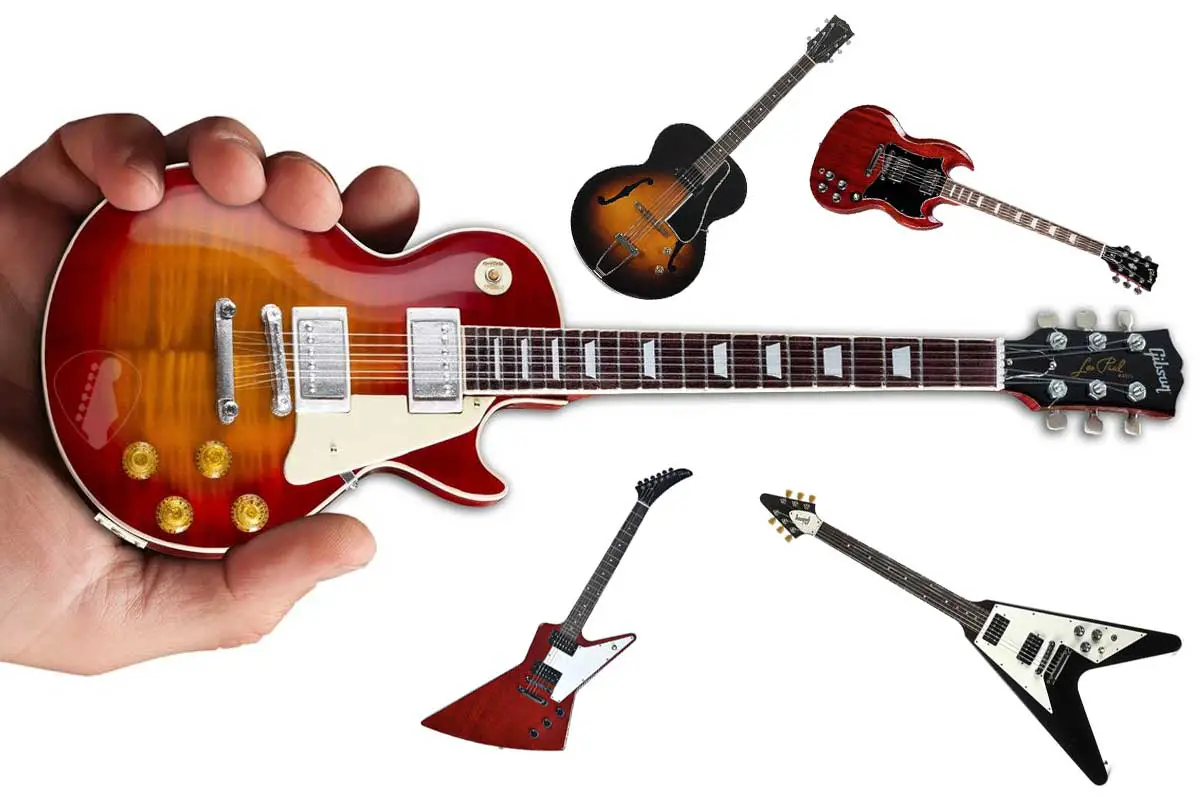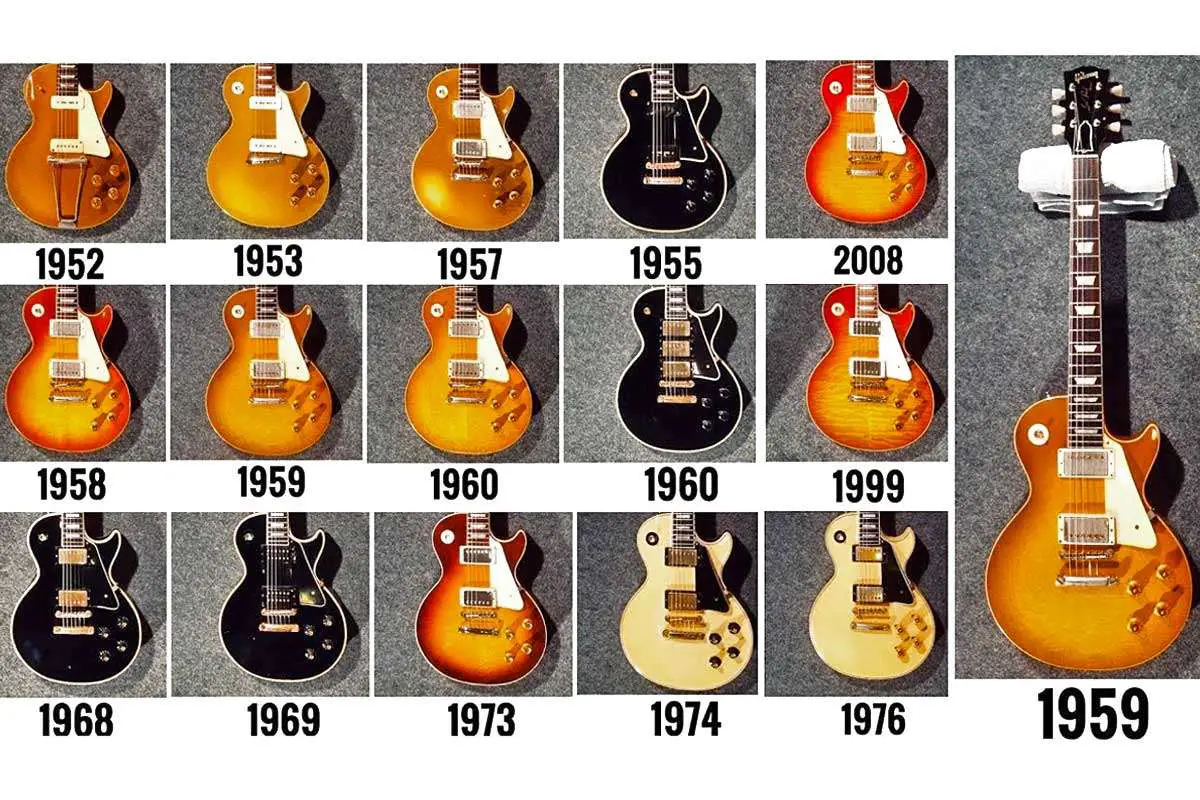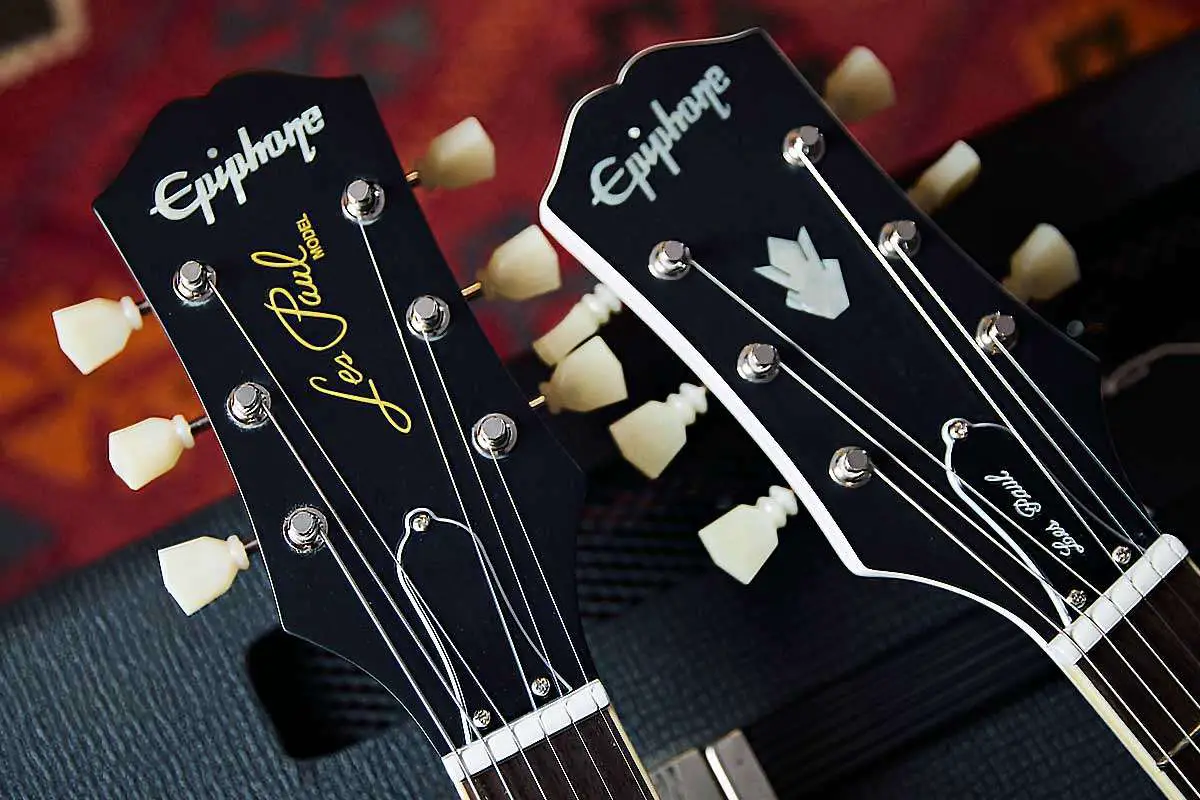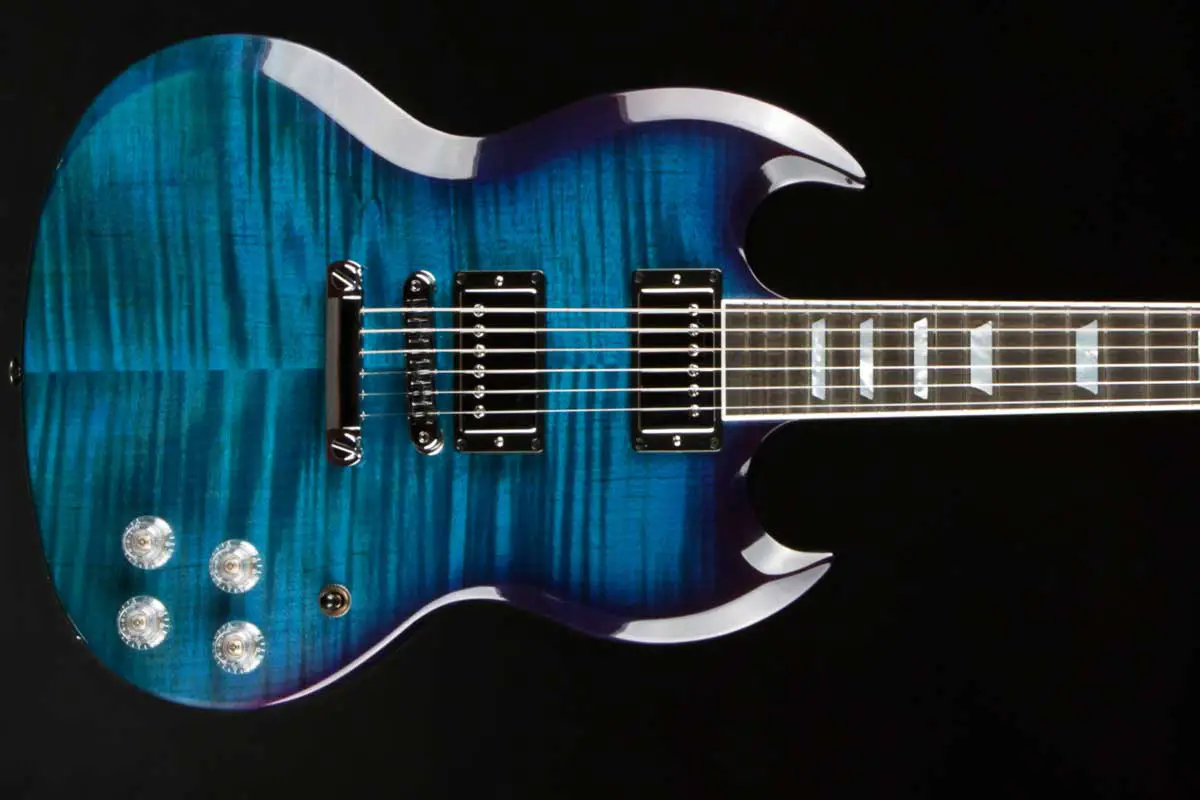The Gibson brand has been synonymous with crafting some of the world’s most iconic guitars, with a history that spans well over a century. Established in 1902 by Orville Gibson, the company initially made mandolins before transcending into guitar manufacturing. Known for innovations and quality, Gibson guitar history begins with early acoustical guitars setting the standard for what a professional-grade instrument should be.
As the years progressed, Gibson ventured into the realm of electric guitars, influencing the sound of modern music with models like the Les Paul, the SG, and the ES-335. The Les Paul, named after the famous guitarist, became a pinnacle of electric guitar design, lauded for its rich tone and sustain. Each Gibson guitar model has played a distinctive role and left an indelible mark on various music genres, from jazz and blues to rock and country.
Gibson guitars carry a legacy paralleled by few others in the guitar industry. Each instrument holds a chapter of music history, whether through the craftsmanship of the hand-carved archtops from the turn of the 20th century or the introduction of magnetic pickups in early Gibson and Rickenbacker guitars. This storied brand continues to shape musical landscapes and inspire musicians around the globe.

The Founding of Gibson and Early Innovations
The history of the Gibson brand is deeply intertwined with the story of Orville Gibson, whose artisanal approach to instrument making set a foundation for a legacy of innovation in the music industry. The brand’s journey from handcrafted mandolins to the iconic guitars resonates with advancements like the archtop design and the essential patents that shaped the modern musical landscape.
Orville Gibson and the Birth of the Brand
Orville Gibson began as a craftsman in Kalamazoo, Michigan, laying the groundwork for his namesake company in 1894. His initial patents for mandolins and guitars with arched tops and backs marked a departure from the traditional flat-bodied stringed instruments, setting in motion the establishment of Gibson Mandolin-Guitar Mfg. Co. Ltd. in 1902. The company’s early years were characterized by Orville’s innovative ideas which redefined the construction and tonality of stringed instruments.
The Archtop Guitar and Early Patents
The archtop guitar, borrowing from the violin’s carved top, was among Gibson’s pivotal contributions to guitar design. This innovation enhanced the instrument’s strength, volume, and tonal clarity, revolutionizing the music industry. In 1922, the company introduced the L-5 archtop, designed by luthier Lloyd Loar, signaling Gibson’s entry into a new epoch of guitar making. This period also witnessed the debut of key patents, such as the adjustable truss rod, which allowed players to maintain the neck’s stability and curvature with unprecedented precision.
Expansion and the Kalamazoo Era
In the Kalamazoo era, Gibson expanded its expertise beyond guitars to include other stringed instruments like banjos and mandolins, marking their influence across various music genres. The town itself became synonymous with quality instrument manufacturing. Gibson’s progress in the mid-20th century was not only a testament to their roots in innovation but also an indicator of the brand’s relentless pursuit of enhancing musicians’ experiences through thoughtful design and technology advancements.
Iconic Electric Guitars and Key Developments
The evolution of Gibson electric guitars is marked by significant models and breakthroughs in guitar electronics that shaped the music industry. This includes the creation of the ES-150, the solid-body revolution through the Les Paul and SG models, the daring designs of the Flying V, Explorer, and Firebird, as well as the introduction of the humbucker.
The Birth of the ES-150 and Electric Guitar Revolution
The ES-150, launched in 1936, was Gibson’s first successful electric guitar and catalyzed the electric guitar revolution. It featured a distinctive archtop design and a Charlie Christian pickup, establishing the standard for electric guitar tone and playability. The ES-150’s cutaway design also allowed easier access to the upper frets, enhancing playability.
Solid-Body Guitars: Les Paul and SG Models
The launch of the Les Paul Standard in 1952 introduced a solid-body guitar that provided enhanced sustain and tonal consistency. Named after the famous musician who contributed to its design, the Les Paul became synonymous with rock and blues guitarists. The SG, which debuted in 1961 under the direction of Ted McCarty, featured a double-cutaway that offered even greater access to the fretboard and became a staple for rock players.

Innovative Designs: Flying V, Explorer, and Firebird
In an effort to push the boundaries of guitar design, Gibson introduced the Flying V and Explorer in 1958. These futuristic designs did not find immediate success but later became iconic for their bold shapes and powerful tones. The Firebird, designed in collaboration with automotive designer Ray Dietrich, debuted in 1963 and boasted a unique body shape and neck-through construction for improved sustain and resonance.
Developments in Guitar Electronics and Humbuckers
Gibson’s developments in guitar electronics were pivotal, including the 1957 introduction of the humbucker, or PAF (Patent Applied For) pickup, designed by Seth Lover. The humbucker reduced noise and hum, providing a thicker, warmer sound that became a defining feature of Gibson guitars. Notably, the Les Paul Standard and other models have since become revered for their use of humbuckers, significantly influencing the sound of electric guitars.
Gibson’s Acoustic Line and Advancements
Gibson Guitars has consistently pushed the envelope in the realm of acoustic guitar design, melding traditional craftsmanship with innovation to create instruments that have shaped the music industry.
Evolution of the Archtop and Flat-Top Acoustic Guitars
Gibson’s journey into the world of acoustic guitars is marked by their pioneering work on archtop and flat-top models. The company’s innovative archtop guitars, which featured arched tops and backs inspired by the violin, became integral to their identity. This design was not only about aesthetics but also about enhancing the sonic qualities of the guitars. One of their key developments was the F-5 Mandolin, introduced by Gibson master luthier Lloyd Loar, which informed future designs of fretted instruments with its f-holes and elevated standards of tone.
Flat-top guitars also saw significant development, as Gibson strived for improved sound and playability. They utilized various types of wood, such as maple and mahogany, to craft distinct tonal characters in their instruments, recognizing the impact of materials on acoustic guitar design.
The Jumbo Series and Advances in Acoustic Tone
The introduction of the Jumbo series was a milestone for Gibson, showcasing their commitment to rich sound and robust volume. The Gibson Jumbo and the subsequent Southern Jumbo enhanced the acoustic tone, with their larger bodies delivering deeper bass and louder projection, becoming stalwarts for rhythm players. The careful selection of woods and attention to the body’s dimensions were crucial for achieving the desired tonal properties.
Gibson’s World War II Era Contributions
Even during World War II, Gibson Guitars remained at the forefront of musical innovation. Despite resource limitations, they continued to produce quality instruments, adapting their processes to the scarcity of the times. Their Dobro and flat-top guitars maintained high standards, often using alternative materials due to wartime restrictions. Post-war, Gibson launched the ES-175, an electric guitar with an arched top that traced its lineage back to their acoustic advancements and was heavily embraced by the jazz community. Gibson’s commitment even during the tumultuous times of World War II reflects the resilience and ingenuity of their approach to acoustic guitar craftsmanship.
Throughout history, Gibson’s advancements in the Acoustic Guitar landscape have not only included remarkable instruments like the Super 400 and the Byrdland but also innovations in acoustic properties and resilience during challenging times.
Cultural Impact and Artist Relationships
Gibson guitars have been at the forefront of shaping music genres and artist legacies. Their instruments have become intertwined with the identities of numerous legendary players, impacting musical styles and popular culture.

Gibson Players and Their Influence on Music
Gibson guitars, particularly the Gibson Les Paul, have been pivotal in the hands of influential musicians. Eric Clapton’s time with the Bluesbreakers and Cream highlighted his use of a Gibson Les Paul which helped define the blues-rock genre. Similarly, Jimmy Page of Led Zeppelin wielded his Les Paul to create some of rock’s most memorable riffs, influencing countless musicians globally. Chuck Berry, credited with pioneering rock and roll, prominently played Gibson guitars; his music and signature stage moves left an indelible mark on the rock genre.
Collaborations with and Endorsements by Artists
Gibson has a long history of partnerships with artists. These collaborations often result in signature models that embody the unique specifications preferred by the artists. Eric Clapton’s signature models have cemented his relationship with Gibson, aligning his name with high-quality craftsmanship. Gibson’s artist relationships extend to developing products that both honor the legacies of historical figures and offer contemporary musicians instruments designed to the specifications of their original heroes.
Competition and Industry Dynamics
Gibson’s history in the guitar industry is defined by fierce competition, strategic acquisitions, and market expansions. The company has navigated through various industry dynamics by both competing with key rivals like Fender and by acquiring other companies, thereby broadening its product line and market presence.

The Rivalry with Fender
In the 1950s, Gibson faced intense competition from Fender, with both brands vying for dominance in the electric guitar market. Two iconic models became the center of this rivalry: the Gibson Les Paul and the Fender Stratocaster. During the 1970s, the battle escalated as musicians increasingly sought out the unique sounds and features each brand offered. Gibson’s craftsmanship and thick, warm tones contrasted with Fender’s innovative designs and brighter sound profile.
Acquisitions and Expansions: Epiphone and Others
Gibson sought to expand its reach and diversify its offerings through acquisitions. In 1957, Epiphone was acquired, allowing Gibson to capture a different segment of the market with Epiphone’s strengths in archtop guitars. Later, in response to market pressures and competition from companies like Gretsch, Baldwin, and Kramer, Gibson further consolidated the market. Its parent company, Chicago Musical Instruments, became a key player in these expansion strategies, driving Gibson’s growth and enabling it to compete more effectively in a dynamic industry.
The Modern Era of Gibson
The Modern Era of Gibson reflects significant transformations, renewed commitment to craftsmanship, and the shaping impact of corporate leadership on the company’s direction.

Transition and the Nashville Influence
In the modern era, Gibson experienced a major transition in production and ethos. In the 1980s, the company moved its main factory to Nashville, which profoundly influenced the sound and build quality of their instruments. This shift marked an important phase for Gibson, as they began to merge traditional techniques with modern manufacturing processes.
Custom Shop and Return to Quality Fundamentals
Gibson’s Custom Shop became a hallmark of the brand’s return to quality fundamentals. Focusing on the production of high-end, custom, and historically accurate reproductions, the shop catered to both professional musicians and collectors. The emphasis on meticulous craftsmanship restored the company’s reputation for producing some of the world’s finest guitars.
Influence of Leadership and Company Direction
The company’s trajectory was heavily influenced by changes in leadership, with each CEO leaving their mark on Gibson’s culture and operations. In recent times, new management has prioritized financial stability and brand heritage, driving a strategic turnaround with a more focused line-up and improved quality control, echoing the company’s storied legacy.
